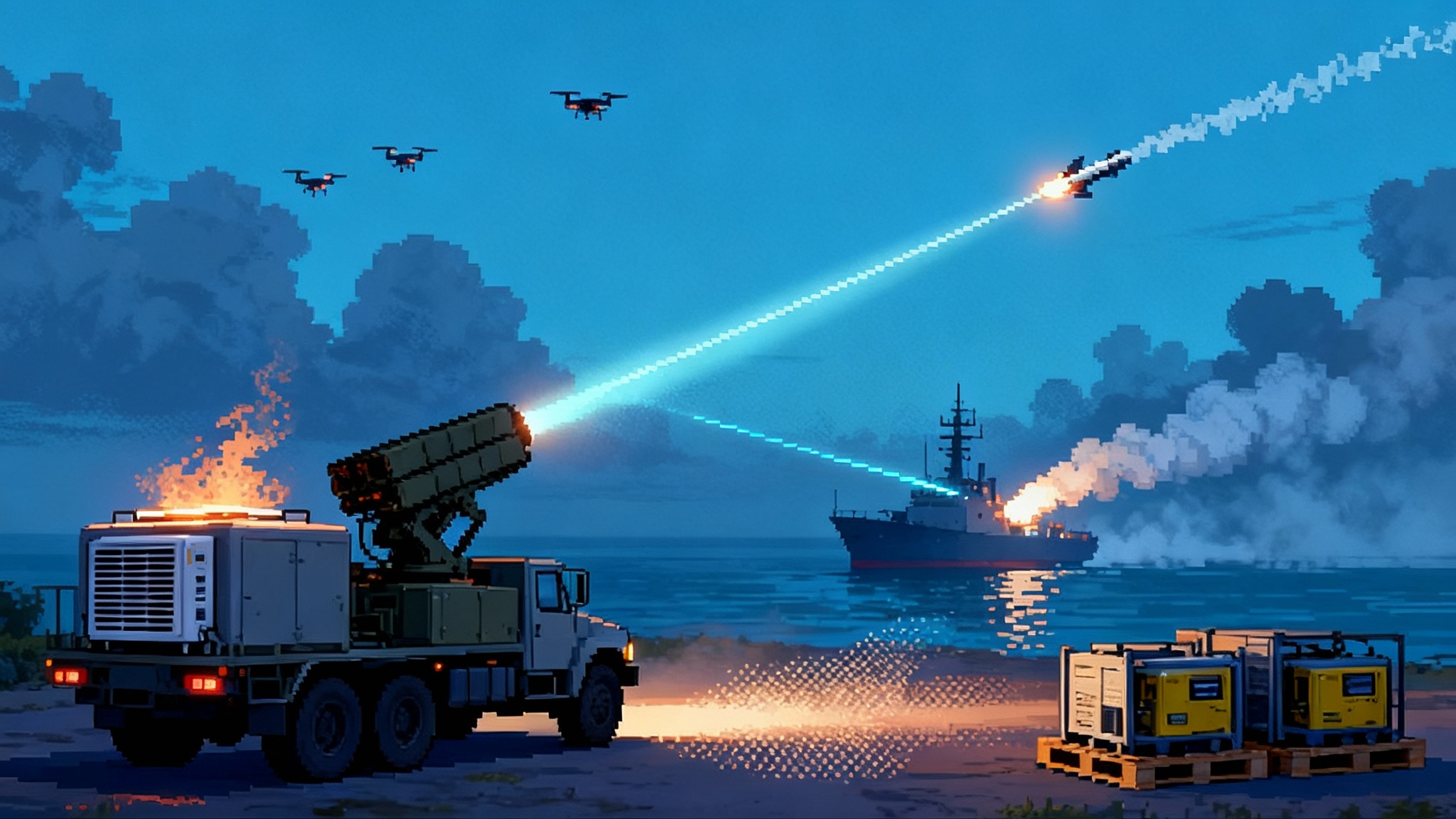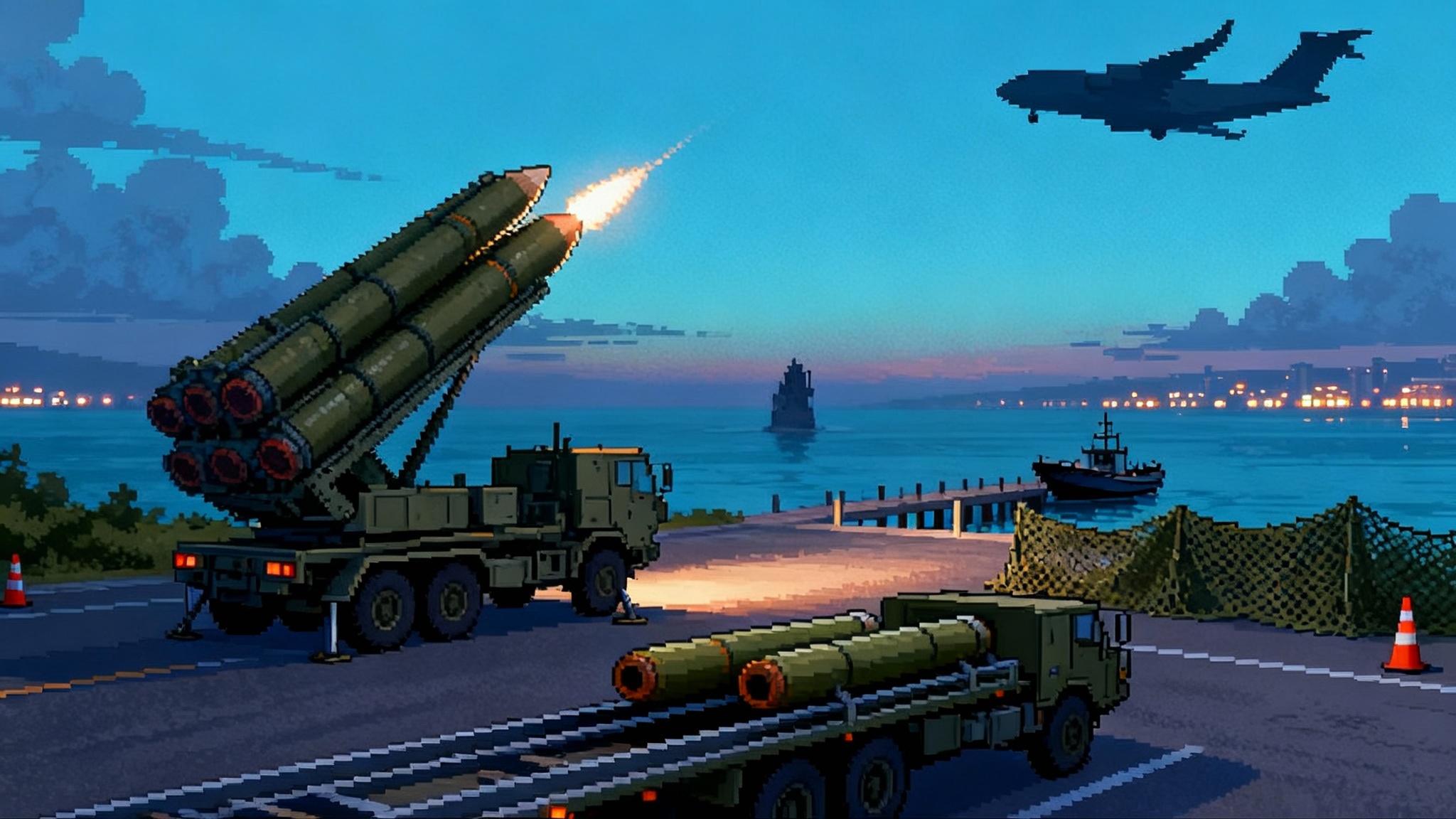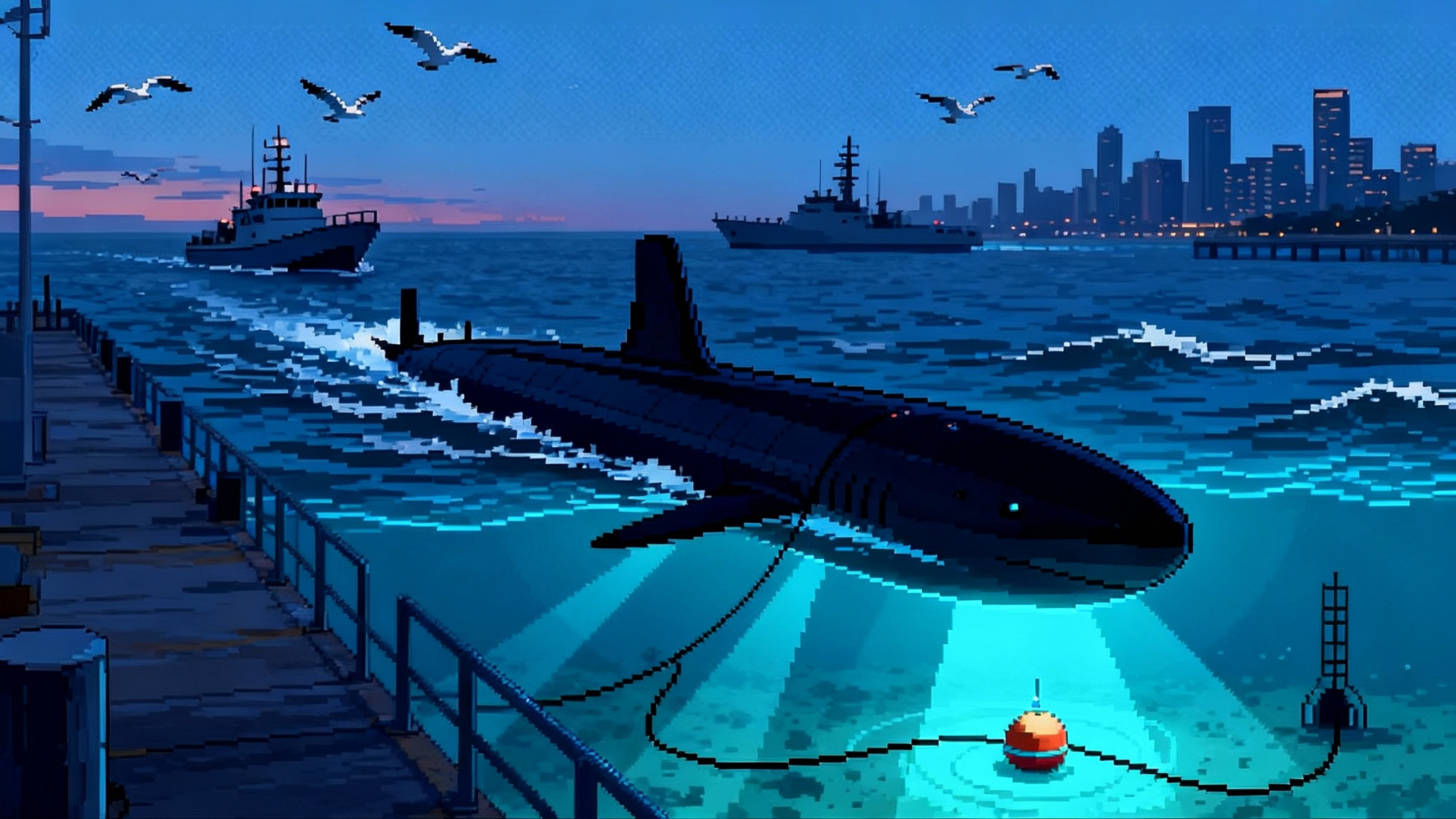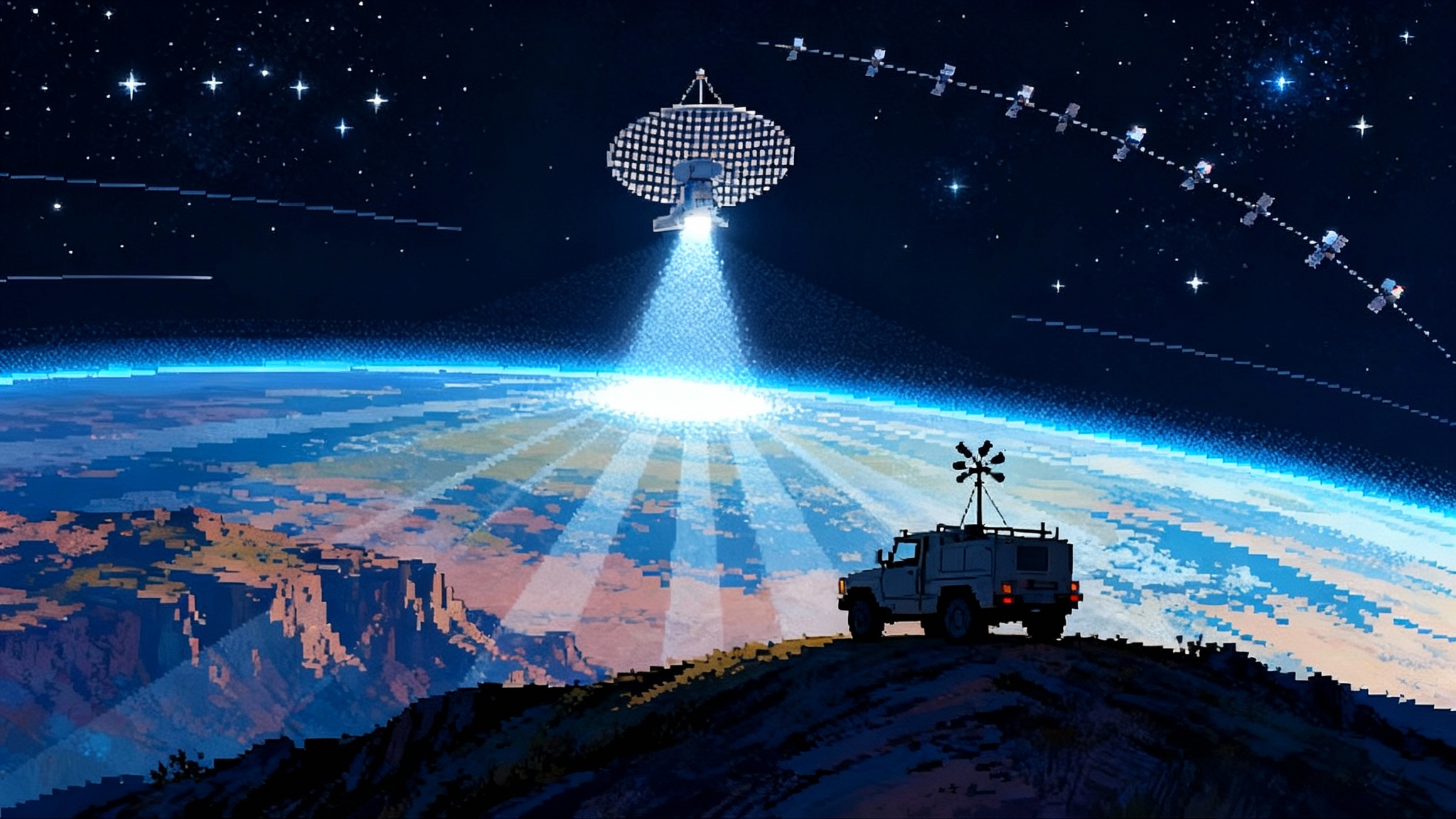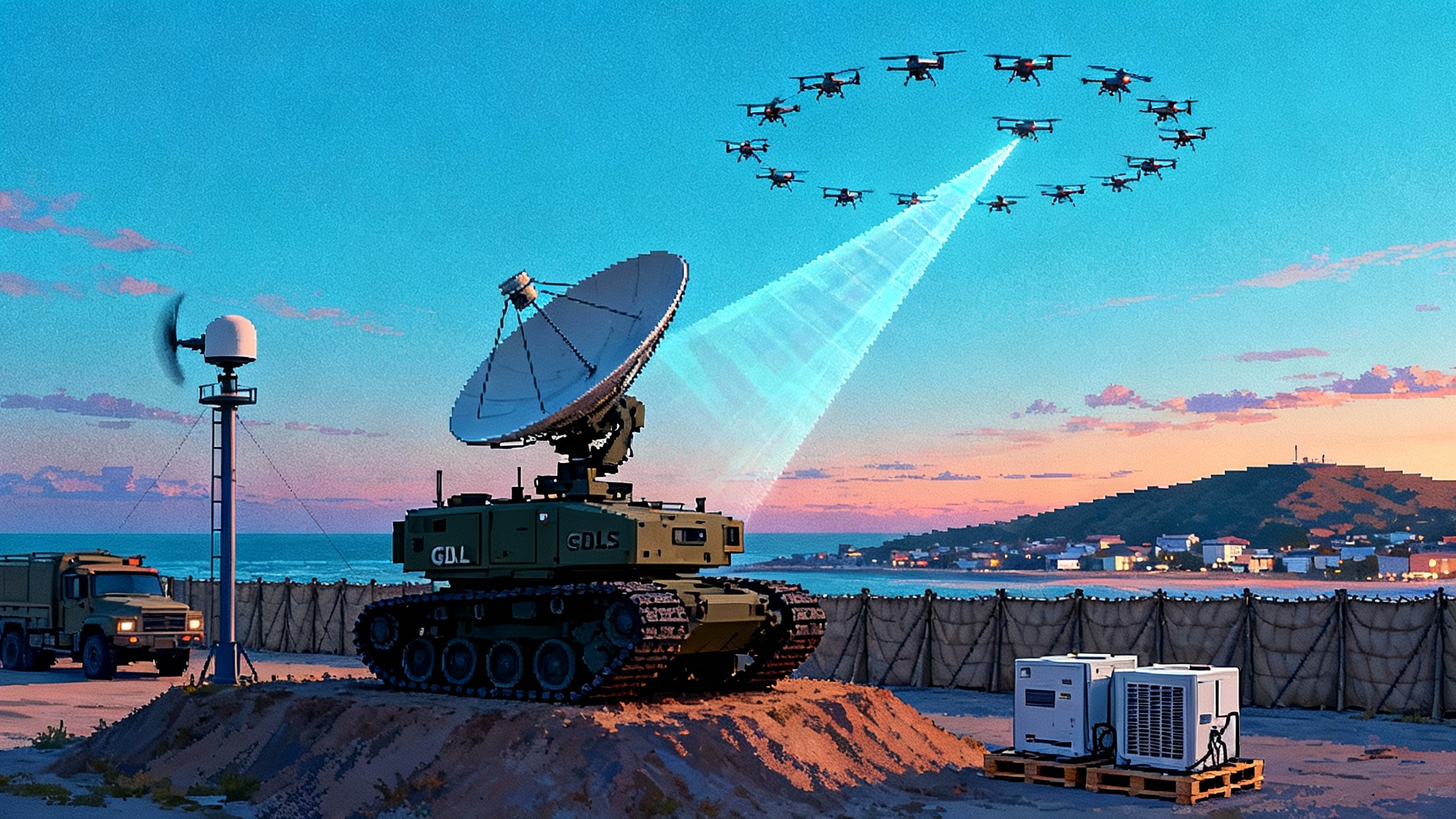TITAN Arrives: AI Target Fusion Puts CJADC2 on Wheels
In March 2025 the U.S. Army began fielding TITAN trucks to the 1st Multi-Domain Task Force. These AI-driven ground stations fuse space and terrestrial sensors to feed long-range fires, compressing sensor-to-shooter timelines across the Indo-Pacific.
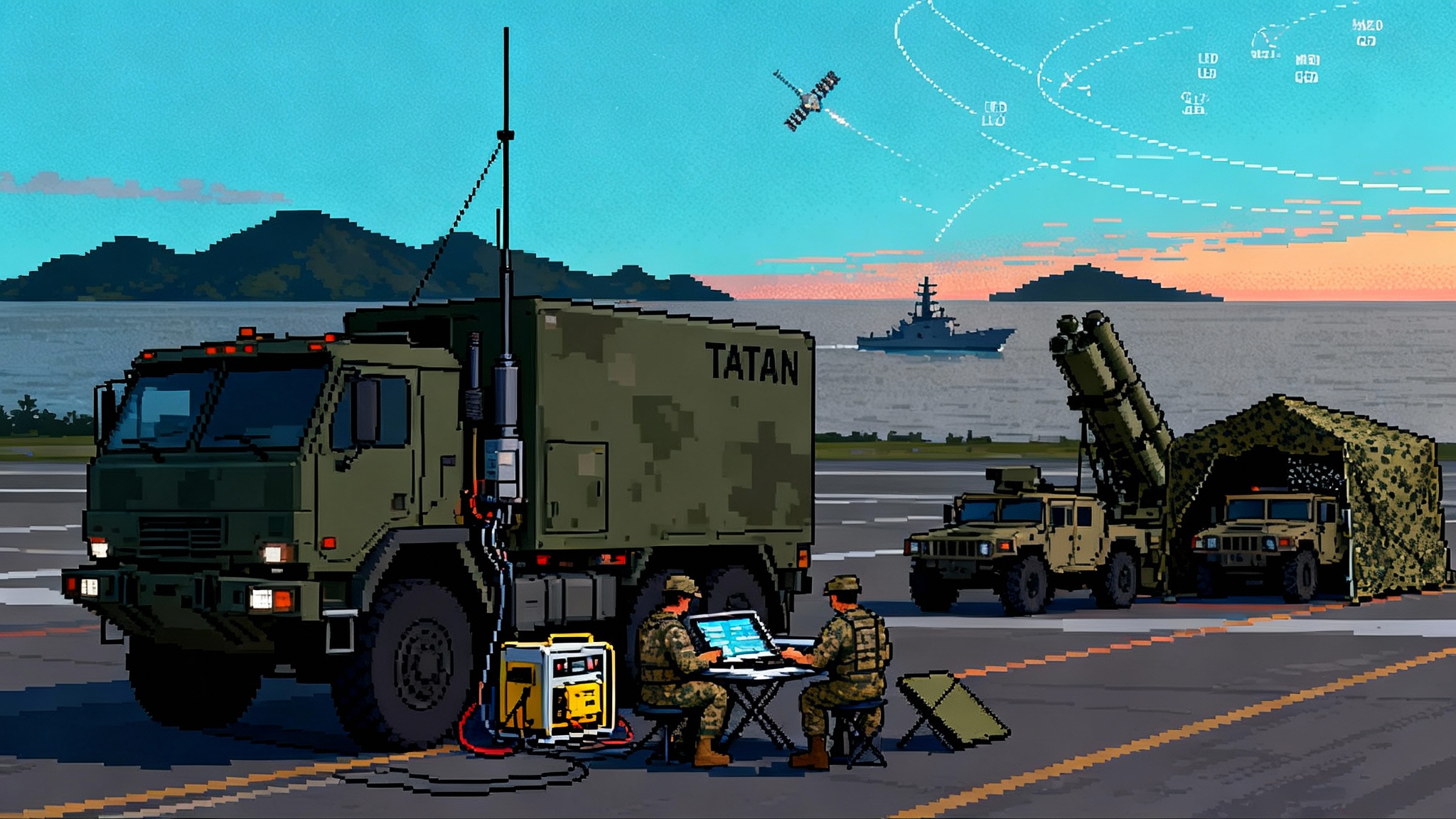
Breaking the bottleneck: TITAN hits the road
On a gray March morning in 2025, the U.S. Army quietly drove a software breakthrough onto the motor pool. The first Tactical Intelligence Targeting Access Node trucks rolled to the 1st Multi-Domain Task Force at Joint Base Lewis-McChord, a unit built for contested, dispersed Indo-Pacific operations. With those deliveries, a long-promised vision moved from slide deck to steel: a deployable node that pulls data from space and the air, fuses it with inputs on the ground, and hands commanders targets ready for long-range fires. As Defense News reported at the time, the Army took receipt of the initial systems and confirmed that the first went to 1st MDTF, placing the prototypes where the Pacific war plan lives and breathes, not in a lab but in a field artillery battalion’s battle rhythm. See the report on the first TITAN systems delivered.
What TITAN is in plain language
Think of TITAN as a data refinery on wheels. The raw crude is a flood of sensor feeds from low Earth orbit, medium Earth orbit, geostationary orbit, high altitude, aircraft, drones, radars and patrols. TITAN’s job is to ingest all of it, remove the noise, correlate what matches, and output refined product: target nominations with coordinates, confidence, and context. Instead of analysts hunting across a dozen screens, the node’s software hunts for them, then presents a fused picture with provenance so a commander can trust the shot.
The Army is fielding two flavors now. The advanced variant rides on a tactical truck with hardware to pull space data directly. The basic variant rides on a Joint Light Tactical Vehicle and reaches many of the same feeds through the network even when a direct space downlink is not available. Both are intentionally software heavy and modular, which matters more than cosmetic differences in shelters or racks. The program baked in continuous updates so the software stack can change every quarter while the truck and the antennas keep doing their job. Palantir leads the current build, with partners like Anduril, Northrop Grumman and L3Harris contributing sensors, radios, mission applications and integration muscle.
How the fusion works without the hand-waving
At the core is correlation. A commercial synthetic aperture radar pass spots a long hull shadow in the Luzon Strait. An overhead persistent infrared sensor registers a hot plume consistent with a gas turbine. A surface-search radar from a partner corvette paints a track with a course and speed. Individually, none of these is enough. Together, they are a near certain vessel class with a stable track and a target-quality position. TITAN’s pipelines align timestamps, reconcile different coordinate frames and uncertainty ellipses, and discard outliers that do not fit the physics.
This is not magic. It is ruthless bookkeeping at scale: time alignment, sensor weighting, and track management wrapped in models that know how a ship, a transporter-erector-launcher, or a mobile jammer behaves. The result is a single track with a confidence flag that a fires cell can act on. The output feeds Army fires networks that cue systems such as Precision Strike Missile units on land, maritime strike aviation, and maritime surface shooters. The fusion stack is designed to degrade gracefully when bandwidth collapses. If all you can push forward is a small target message, TITAN will push the message and hold the imagery for later.
The Pacific kill chain, now in minutes
The Indo-Pacific is mostly ocean, island chains, weather and long distances. That is why reconnaissance and time matter more than any single missile type. TITAN changes the geometry by shrinking the time it takes to move from detect to engage and by making that loop repeatable across allies.
Consider a realistic chain. A commercial radar satellite passes over the Bashi Channel and flags a formation that looks like a surface action group. TITAN ingests the pass, correlates it with a low Earth orbit infrared detection hinting at fresh engine heat, validates the track with a partner’s coastal radar, and nominates a target package. Minutes later, an Army fires cell uses the package to cue a maritime strike battery like the Army’s Typhon capability outlined in land-based sea strike remakes the Pacific. If the rules of engagement authorize it, a precision missile shot follows. The node then tracks the damage with a subsequent satellite pass and refreshes the target list. Each step used to be a manual handoff that took tens of minutes or longer. With TITAN in the loop, the same steps compress to minutes and survive intermittent links because much of the compute rides in the truck, not in a distant data center.
Two design choices make this possible:
- Direct access to space sensing. The advanced variant can pull down data without waiting on distant relays, which matters when adversaries jam or when routing through a theater hub introduces avoidable delay.
- AI models living at the edge. TITAN runs target recognition, correlation and georegistration onboard. That reduces the amount of data that must move over a contested spectrum. You can send a tiny, high value message that says what and where, not a massive file that says maybe.
Why this looks like the first deployable slice of CJADC2
CJADC2 is the Department of Defense vision to connect sensors and shooters across services and with allies using data, software and resilient networks rather than single service stovepipes. In early 2024 the Pentagon declared an initial minimum viable capability for CJADC2, a signal that the once aspirational framework had shipped software and could move beyond concept briefs. The department described the initial version as a combination of real networks, data integration and live apps. See the official note on the initial CJADC2 capability.
TITAN is the first ground-deployed piece that soldiers can park next to a launcher and point at the ocean. It privileges software over hardware. It rides on open interfaces and a pipeline the Army calls Project Linchpin so models can be trained on new signatures and pushed to the edge without swapping boxes. It shifts the burden from bespoke antennas to smart adaptation layers that can talk to commercial constellations on Monday and to a new military satellite waveform on Friday. That approach aligns with policy moves like Space Force activates CASR, which primes commercial constellations for wartime tasking.
This is CJADC2 with muddy tires. It takes the data mesh idea that lives in PowerPoint and instantiates it where it hurts: on a windy pier, on a coral runway, in a tree line facing an electronic warfare threat. If a partner nation can share an unclassified radar feed, TITAN can ingest it and fuse it with classified sources while protecting what must remain secret. That is how interoperability becomes real. Not by agreeing on a grand network, but by agreeing on data contracts and cross domain guards that let target-quality facts move fast.
Commercial plus military space is the point, not a bolt-on
The Army designed TITAN to treat commercial and military space as complementary. In low Earth orbit, large constellations provide revisit rates measured in minutes rather than days. In medium and geostationary orbits, missile warning and communications provide persistent stare and backbone transport. Commercial synthetic aperture radar, radio frequency geolocation and electro optical imagery sense through clouds, at night, and across vast sea lanes. Military infrared and missile tracking satellites provide custody on dim or fast movers.
The practical effect is density. Instead of waiting for the one golden collection to line up, the node can knit together many bronze ones and still deliver a fire-ready solution. In a theater the size of the Pacific, density beats perfection because it lets you stay inside the adversary’s decision cycle.
A kill web example you can picture
- Detect: A commercial radar satellite spots a vessel cluster northeast of Luzon at 0317 local. Cloud cover is heavy.
- Fix: A medium orbit infrared sensor confirms thermal signatures consistent with two large combatants. A partner coastal radar extends the track inland from its shoreline vantage point.
- Track: TITAN correlates tracks, removes a fishing fleet nearby based on speed profile and turn behavior, and maintains a quality track across gaps as a low Earth orbit relay passes overhead.
- Target: The node outputs a target nomination with coordinates, classification, and a confidence score. The fires cell validates the rules of engagement and requests authority.
- Engage: A land-based maritime strike battery receives the cue over a resilient, low probability of intercept link and fires at standoff range.
- Assess: Another radar collection shows a mobility kill on one hull. TITAN updates the picture and nominates follow-on targets.
Every step in that chain is hard under jamming and deception. The difference with TITAN is that the labor shifts from humans to software where it should, while leaving judgment in human hands where it must remain.
Built for a contested spectrum
TITAN assumes the radio is not your friend. The node schedules transmissions to hide in noise, prefers small messages over fat files, and can fall back to line-of-sight relays when satellites are noisy. The truck’s compute stack is sized to run correlation without reaching back to the cloud. When the spectrum opens, it synchronizes and refreshes models and maps. When it closes, it keeps a local picture good enough to fight.
Time and timing are survivability. That is why the system ties into assured positioning, navigation and timing gear already riding on Army platforms. New PNT resiliency from reprogrammable GPS enters the fight will further harden timing and navigation. If the node and the shooter agree on time, they can agree on where a target will be when a long range weapon arrives, even when the global positioning system is foggy.
Software first is not a slogan
The phrase AI-defined vehicle sounds like marketing until you watch a unit update models in a motor pool. TITAN’s software pipeline supports repeatable, testable, roll-forward and roll-back updates. New model to detect a specific radar on a hostile frigate. New logic to discount decoys. New tuner for a payload on a just-launched satellite. All of these can arrive as a software drop.
Why this matters in the Pacific: distances and logistics favor software. You can ship a container to Guam, but it is faster and cheaper to ship an over-the-air update that improves confidence by ten points on a target class you care about. You win when your software learns faster than the adversary’s deception matures.
Interoperability with allies as a design requirement
Allied interoperability is not a nice-to-have in the first island chain. The node is built to handle multi classification data with strict separation and logging so partner feeds can be used without bleeding secrets. Practical examples:
- Unclassified partner coastal radar feeds can seed tracks that TITAN then strengthens with other sources.
- A partner can see the tracks they contributed without seeing sensitive sources that confirmed them.
- Mission partner environments allow a combined fires picture where each nation sees enough to act, while a joint cell sees the whole.
The test will be large exercises that push these features at scale. Expect to see TITAN paired with Navy and Marine Corps sensors and with partner patrol craft and coastal batteries. Expect early friction on data policy. Expect progress once units discover that the fastest way to a valid target package is to share the smallest amount of data that proves the case rather than the largest amount of data you could hoard.
Frictions to fix now
- Classification gravity. Data is often over classified. Leaders can set ceilings for specific data types so unclassified tracks can move faster to partners while still protecting sources.
- Electronic warfare pressure. Plan primary, alternate, contingency and emergency paths for TITAN’s outputs, including short burst messaging and opportunistic relays on aircraft or small drones.
- Model drift. Establish a theater cadence for validating edge models against truth data. Make it a staff task with ownership, not an afterthought.
- Spare compute and power. In hot, salty environments, margin matters. Commanders should budget spare power, fans and swap kits as if they were ammunition.
What to watch between now and 2026
- Prototype deliveries. The Army plans to complete this batch of ten systems by 2026, split between advanced truck variants and basic JLTV variants. That mix will shape how many units can do direct space downlink versus network reach-back.
- Live-fire integration. Watch for exercises that pair the node with land-based maritime strike batteries, Precision Strike Missile units and allied coastal missiles. The test is not a single demo. The test is whether a unit can run the full loop during a chaotic exercise week.
- Data contracts with commercial space. The limiting factor may be licensing and prioritization, not antennas. Units will need standing contracts and preplanned priority arrangements with commercial radar and radio frequency companies to guarantee tasking during a crisis.
- CJADC2 plumbing. TITAN will matter even more as the Joint Fires Network and service battle networks mature. The payoff comes when a track validated at one node can cue a weapon from another service without a human emailing a screenshot.
The upshot
TITAN matters because it changes who waits. Before, shooters waited on sensors and analysts to catch up. Now sensors and analysts feed a node that is built to keep shooters ahead. In the Pacific, that time swing is worth more than a shiny new launcher. It is the difference between a force that reacts and a force that sets tempo.
If you strip away the acronyms, TITAN is the first meaningful proof that the Pentagon’s connect-everything idea can survive salt air and jamming. It is also a bet that software will outpace hardware. That bet is right in a theater where the fastest thing you can ship is code. The trucks have arrived. The real race starts now, measured in model pushes, kill chains closed, and allied tracks that become allied shots.
A smart close
The Army did not invent physics with TITAN. It respected physics. The node sits where distance, weather and spectrum punish indecision most. It assumes the radio will be ugly, that allies will see pieces you do not, and that the fastest authoritative answer wins. That is exactly what the Pacific demands. Call it CJADC2 if you like. Soldiers will call it Tuesday: a truck, a map, a mission, and targets arriving fast enough to matter.
